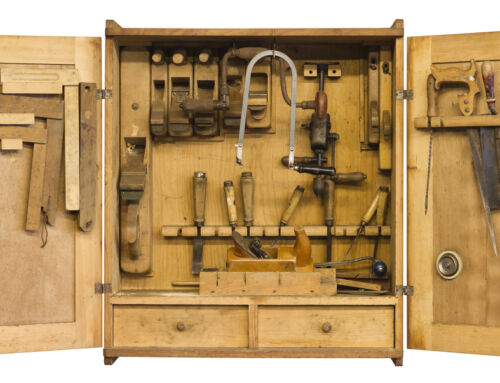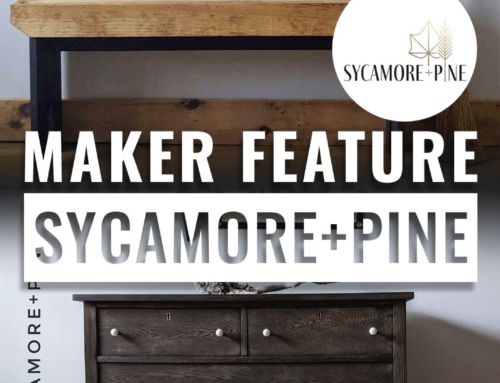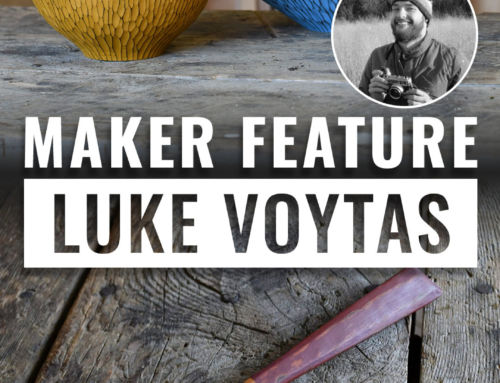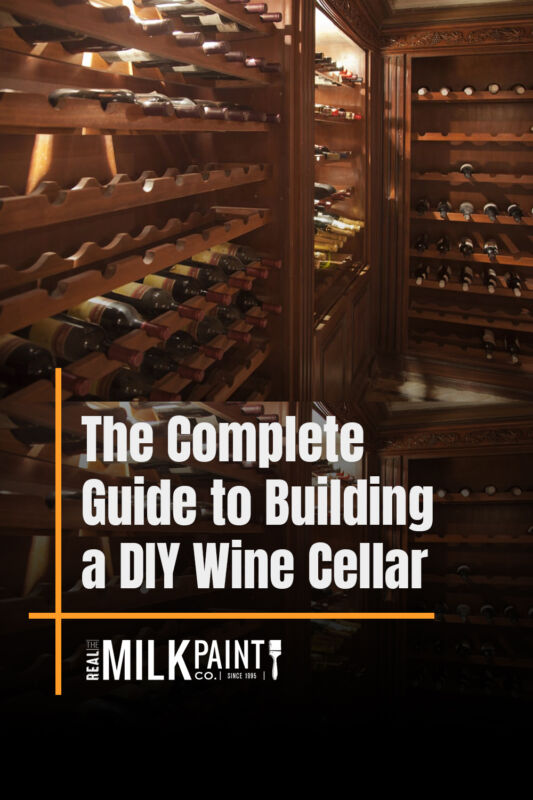 Wine storage requires a bit of finesse, and if you’re a fan of good vino, you probably want dedicated space to maintain your wine collection until you’re ready to sip it. Fortunately, if you have a reliable basement that is free of natural light or a properly sealed interior room, you can create a basement wine cellar there with a bit of preparation and elbow grease. Keep reading for a quick rundown of considerations when storing wine bottles, a basic plan for building a wine cellar and inspiration for your own build.
Wine storage requires a bit of finesse, and if you’re a fan of good vino, you probably want dedicated space to maintain your wine collection until you’re ready to sip it. Fortunately, if you have a reliable basement that is free of natural light or a properly sealed interior room, you can create a basement wine cellar there with a bit of preparation and elbow grease. Keep reading for a quick rundown of considerations when storing wine bottles, a basic plan for building a wine cellar and inspiration for your own build.
How to Build a DIY Wine Cellar in Your Basement
Creating a wine cellar in your basement not only enhances your home’s value but also provides an ideal environment to store and enjoy your wine collection. With the right preparation and materials, you can transform your basement into a wine haven, complete with climate control, elegant storage, and a cozy ambiance. Building a wine cellar is about more than just installing shelves – it’s about crafting a controlled environment where your wine can age gracefully, free from the fluctuating temperatures and humidity that can harm its quality.
Step 1: Seal the Basement for Climate Control
A stable environment is essential for a wine cellar, making it crucial to first address the foundational aspects of your basement. Begin by sealing the concrete floors and walls to create a vapor barrier against air leaks and moisture, both of which can disrupt the ideal temperature and humidity levels.
- Seal Concrete Surfaces: Use Pure Tung Oil from Real Milk Paint Co., as it deeply penetrates concrete, brick, or stone to provide long-lasting protection. Tung oil forms a water-resistant barrier, helping maintain consistent humidity, which is key for wine preservation.
- Treat Wooden Elements: If your wine cellar design includes exposed wood elements, seal these surfaces with Real Milk Paint’s finishing oils like Pure Tung Oil or Wood Wax. These finishing oils protect against moisture while maintaining a natural look, enhancing both durability and aesthetics.
- Add a Vapor Barrier: After sealing, install a vapor barrier on walls to prevent mold growth, which is critical in a cellar setting where humidity is high. Choose a polyethylene plastic sheet and secure it to create a continuous layer of protection against external moisture.
Step 2: Insulate to Maintain Temperature and Humidity
Once sealed, insulation is vital to regulate temperature fluctuations. Wine should ideally be stored in a cool, consistent environment, generally around 55°F with about 60-70% humidity.
- Insulate Walls with Foam Board: Use rigid foam board insulation for its high R-value, which offers excellent thermal resistance. Secure these panels over the vapor barrier for an effective barrier against outside temperature.
- Focus on Ceiling and Floor Insulation: Don’t overlook the basement ceiling and concrete floor, especially if rooms above the cellar vary in temperature. A well-insulated ceiling can prevent temperature transfer from heated or air-conditioned areas. For floors, an extra layer of foam board or a rubber underlayment can offer additional ambient temperature stability and soundproofing.
Step 3: Select the Right Door and Seal for Optimal Storage Conditions
A door to a wine cellar must contribute to the controlled environment by being insulated and properly sealed.
- Choose Insulated Doors: Opt for a solid wood or insulated glass door to keep conditions stable. If you prefer glass doors, consider double-paned options that help maintain a stable environment while letting you showcase your collection.
- Weather-Stripping for Airtight Seal: Apply weather stripping around the door frame to prevent any air exchange that might compromise cellar conditions.
Step 4: Set Up a Reliable Cooling System
Wine cellars typically require a specialized cooling system to maintain consistent temperature, especially if your climate or basement conditions fluctuate.
- Invest in a Cellar Cooling Unit: Choose a cooling unit specifically sized for your cellar’s square footage. Units such as self-contained through-wall systems or split cooling units work well in small, well-insulated spaces, providing the necessary cool air circulation without over-drying.
- Monitor Humidity with a Hygrometer: Since cooling systems can lower humidity, use a hygrometer to check and regulate moisture levels. You may need a humidifier to keep humidity in the recommended 60-70% range.
Step 5: Finish Your Walls with Mold-Resistant Paint
To add aesthetic appeal and durability, consider finishing your walls with Real Milk Paint, which comes in various colors and has eco-friendly, mold-resistant properties ideal for cellar conditions.
- Apply Water-Resistant Drywall or Concrete Sealer: If your cellar walls are concrete, consider sealing them with a water-resistant sealant. If you use drywall, opt for moisture-resistant or green board drywall.
- Real Milk Paint Application: Choose a Real Milk Paint color that complements the ambiance you envision. Earthy tones like Soft White or Stoneware can evoke a rustic, cozy feel, while darker colors add a moody sophistication to the cellar.
Step 6: Test for Leaks and Adjust as Needed
Before moving your wine collection, test your cellar environment by running the cooling system and monitoring temperature and humidity for a few days. Make sure all seals, especially around the door and closed cell foam insulation layers, are intact and adjust as needed.
Step 7: Add Custom Wine Racks and Storage
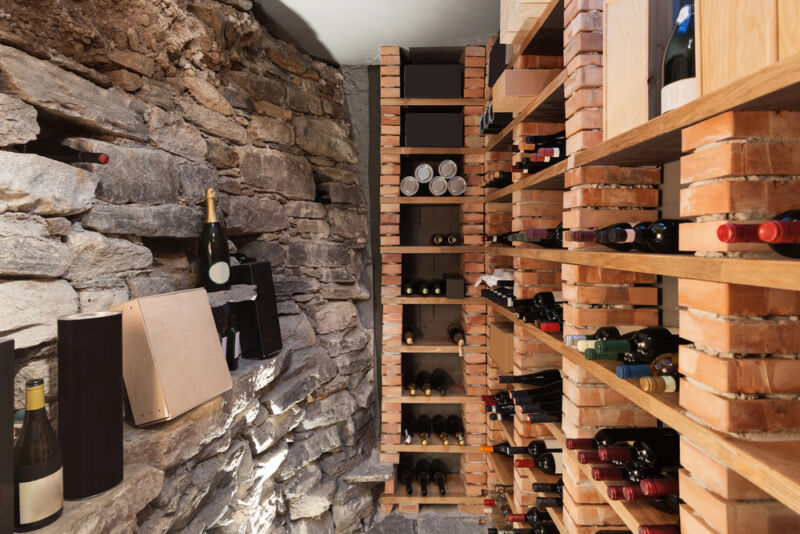
Finally, design storage that fits your wine preferences. Customizable racks allow flexibility for different bottle sizes, ensuring each wine type has an ideal resting place.
- Select the Right Racks: Opt for wood or metal racks that can withstand the humid conditions in the cellar. For a traditional look, wood adds warmth, while metal racks create a sleek, modern feel.
- Include Furniture and Storage: Add a small table for wine tasting or a cabinet for wine accessories like openers, glasses, and decanters. A tasting nook with a few bar stools and ambient lighting can make your cellar both functional and inviting.
Step 8: Regular Maintenance for Long-Lasting Enjoyment
To keep your wine cellar in optimal condition, schedule periodic inspections to check for any leaks, especially around seals and insulation. Every few months, verify the functionality of the cooling system and humidity levels, making adjustments as needed. Using food-safe oils like Pure Tung Oil on wood surfaces and Real Milk Paint maintenance products for walls can also help maintain a polished look over time.
Creating a DIY wine cellar in your basement involves attention to detail at each step, but the reward is a beautiful, climate-controlled space where you can enjoy and store your favorite wines safely. Enjoy customizing this cellar to your taste and savor the atmosphere it brings to your home.
Things to Consider When Storing Wine Bottles
Proper wine storage requires several key things to ensure the wine bottles stay in tip-top shape. Your wine collection needs to live in a space that has no light, water or air leaks, and it also needs proper insulation to ensure constant temperature and humidity. As a rule of thumb, your wine cellar should include:
- Uniform temperatures between 45° and 65° F
- Constant humidity levels between 50% and 70%
- A completely dark space with no vibration
- Sturdy wine racks designed for proper wine storage
If you really want to get serious about your wine storage spaces, you can add wine cooling units to your wooden wine racks to ensure warm air doesn’t damage your wine collection.
Inspiration for Building a Home Wine Cellar
If you’ve ever wondered what it would be like to build a root or wine cellar of your own, here’s some inspiration for your DIY wine cellar project. One of our Real Milk Paint fans had the idea to create their own underground food and wine storage cellar. They wanted to create a food-safe cellar with a wine cooling unit that would be easy to maintain and keep everything safe and dry. Leveraging wine cellar design inspiration from The Hobbit, they set to work designing, building and creating a one-of-a-kind wine and food cellar using Real Milk Paint products. Here’s their story.
A Lesson in Wine Cellar Building and Construction
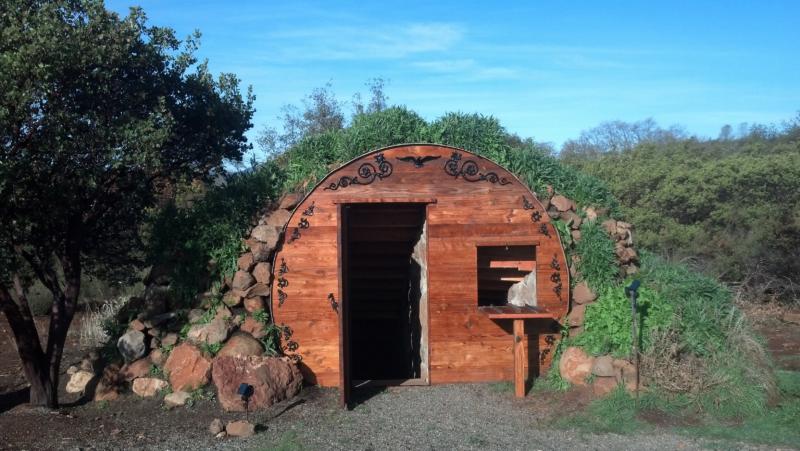 Late in 2011 as I was thinking about the next project that we should do, I thought about having a root cellar, like I had when I was a kid growing up in the Midwest. We have level ground on our property, so digging into a hillside wasn’t an option. With that in mind, I started sketching a wine cellar design that I thought would work the location. For the wine cellar construction, I needed to dig a square hole, use our native rocks for wine cellar walls, build a ramp to the surface, then add an exterior-grade door at the top. Being a fan of Tolkien’s, I ended up drawing what looked like a hobbit home. Though I’d gone into the project looking to expand root cellar space, my wife bought into the project when I used the term “wine cellar” instead of “root cellar,” and off I went.
Late in 2011 as I was thinking about the next project that we should do, I thought about having a root cellar, like I had when I was a kid growing up in the Midwest. We have level ground on our property, so digging into a hillside wasn’t an option. With that in mind, I started sketching a wine cellar design that I thought would work the location. For the wine cellar construction, I needed to dig a square hole, use our native rocks for wine cellar walls, build a ramp to the surface, then add an exterior-grade door at the top. Being a fan of Tolkien’s, I ended up drawing what looked like a hobbit home. Though I’d gone into the project looking to expand root cellar space, my wife bought into the project when I used the term “wine cellar” instead of “root cellar,” and off I went.
In January of 2012, my neighbor, who had a backhoe, and I picked out and set up the wine cellar location, and he traced out the outline using flour he took from his pantry. As we finished up the rough outline and looked back, we saw the outline being erased by my dog. who was busy eating up the trail of flour. At that point, I knew this was going to be one of those projects.
Roofing the Wine Cellar Build
Fast-forward past the adventures in digging and installation of the rock walls in the main chamber, the next step was to decide on the wine cellar roof. I considered a metal roof and had a welder look at the project, but going back to the hobbit hole, I couldn’t see how that fit. Plus, it was still going to be expensive going that route. So instead, I had the welder put a frame around the roof that was 1/4-inch thick with a 2-inch long metal lip, then concrete it into the holes left in the wall. I considered this extra insurance that the A-frame could maintain the weight of the 1-1/8-inch floor-grade plywood roof over time.
After covering the top with a rain and ice membrane and coating the surface with roofing tar on the seams, I treated the bottom of the roof and 4 x 6 beams that made up the solid Douglas fir A-frame with Real Milk Paint Pure Tung Oil. I didn’t want to take any chances with the load factor on the roof, so I positioned the trusses 12 inches on center, then glued and screwed the components together for added stability and support.
Adding the Wine Cellar Door
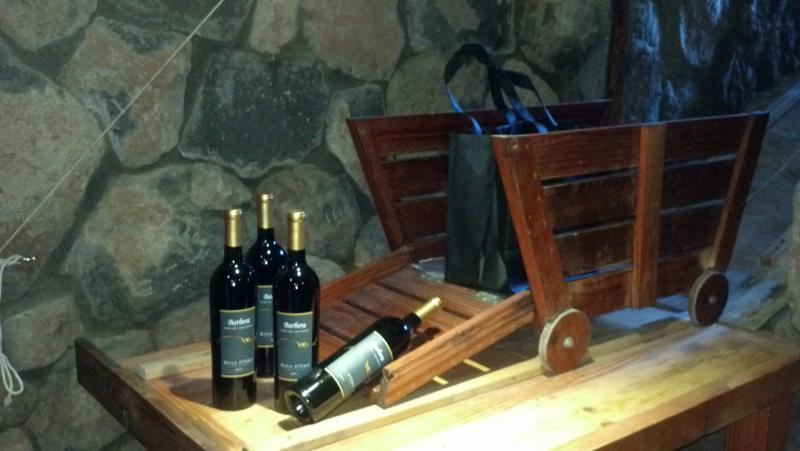
Once the rock wine cellar walls from the ramp that led up the stairs were nearly done, it was time to turn to the front facade. I’d thought about a round wine cellar door, but the hinging and weight didn’t seem worth it. Early on, I’d decided that I’d create a round wine cellar front with a straight bottom and add a normal-size door just cut out of the circle.
Doing the math, I knew I needed to create a 10-foot diameter circle to have a decent door with the meat around the frame. Of course, when I drew that out there was all the space around it that seemed wasted. In a flash of stupidity when I first drew it up, I came up with the idea of a wine train that would sit next to the door, which would require adding a second small trap door and ramp. The idea was you could load a case of wine on a wine train and lower it down a ramp, walk down the stairs and put the wine onto the wine racks. Of course, this meant building an extra ramp and extra wall. At the time, I didn’t appreciate how much back-breaking work I could create for myself with just a few pencil lines on a drawing.
Since the front facade would face the elements and be the first thing people see, I decided to use all redwood in its construction. I planned all the 10-foot redwood boards by hand and glued them together in sets of four or five boards. I then screwed cleats onto the board sections and assembled them into an 8.5 x 10-foot rectangle. Next, I cut the circle out, then sanded and treated the wine cellar construction with lots of Real Milk Paint’s Tung Oil on both sides. Finally, I installed and bolted the facade onto the rocks, then cut out the wine cellar doors and hung them in place.
To complete work on the facade, I finished the last of the roof and sealed it, then built and installed a custom door frame for the bottom. I also built a second redwood door for the main chamber, again coating the surface with Pure Tung Oil for a beautiful shine that never sees sunlight.
Then, it was all covered in dirt.
Customizing the Inside of the Cellar
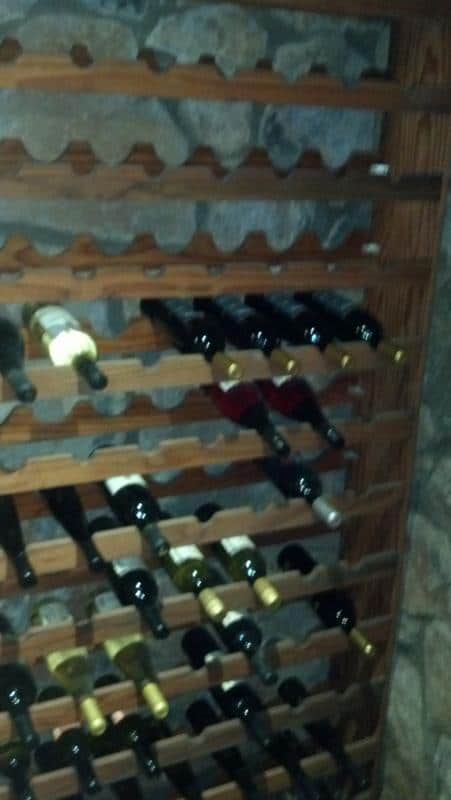 To customize the inside of the wine cellar, we added shelves for canned items and the fruits and vegetables we planned on storing inside the wine cellar. We optimized our wine cellar space by screwing simple Douglas fir boards into the interior walls and protecting the wood with Pure Tung Oil. For the wine racks, we decided on redwood and built an expansive seven-case space to store wine. The redwood really sucked up a lot of Pure Tung Oil, and we were surprised that the more we applied, the darker the wood looked.
To customize the inside of the wine cellar, we added shelves for canned items and the fruits and vegetables we planned on storing inside the wine cellar. We optimized our wine cellar space by screwing simple Douglas fir boards into the interior walls and protecting the wood with Pure Tung Oil. For the wine racks, we decided on redwood and built an expansive seven-case space to store wine. The redwood really sucked up a lot of Pure Tung Oil, and we were surprised that the more we applied, the darker the wood looked.
Next, I needed a table at the end of the wine ramp that was at the right height and a wine cart with a hinged back to simplify unloading cases of wine. Here, I used scraps of Pure Tung Oil-treated redwood from the project to build the wine cart. By this point, I’d placed several orders with Real Milk Paint and was getting used to seeing the packages arrive from UPS, always prompt and well sealed. Even though it came from across the country, I never had any problems and it was just something I always knew would be there ready on time.
Other things, however, caused delays.
Finalizing the Details
By early 2014, the last detail of the DIY wine cellar with a cooling system project seemed complete. I’d experienced a few failures along the way, including the realization that the wooden wine cart wheels weren’t working, and no amount of Pure Tung Oil could fix this. I solved this problem by adding skateboard wheel bearings and the project was almost finished — or so I thought.
The California Wildfires of 2015
The Valley Fire came on September 12th, 2015, and it was the third major fire in our area that year — and the one that was the most destructive. The fire burned 1,300+ homes and pinned me and several neighbors down by closing off both exits to our neighborhood with its size and speed. We were seconds away from using the wine cellar as a refuge with myself and my next-door neighbor lined up at the door until we saw the road clear and we left. When we returned, our house and most structures on the property were burned to the ground, but the well-house survived. The wine cellar had a manzanita next to it, and the tree was gone except for the stump, and there was significant damage to the top facade. The rest of the wine cellar, however, was untouched. A lot of other work, including rebuilding our house, had to be done before the wine cellar, so it sat until 2018.
The Wine Cellar Build — Part 2
While rebuilding the front facade of the wine cellar, I changed a few things. First, the original drawing had the boards horizontal, but this wasn’t a great design for the human door as it was made of several pieces that wanted to collapse under their own weight. So, I built the new facade with the boards running vertically.
Next, I added an awning to allow more dirt on top and help protect the facade a bit from some of the elements. The price of redwood had gone up significantly, so I decided to go with Douglas fir to save money. This also shifted my preferred finish from Pure Tung Oil to Dark Tung Oil. Also, I wanted to slightly darken the plywood sheets that comprised the awning, but I didn’t want it to be too dark. With that in mind, I’d put the first coat on as Dark Tung Oil and once the look meshed with the previous build, I’d move back to using Pure Tung Oil.
The nice thing is you can go back and forth with tung oil products from the Real Milk Paint Co. Keep in mind, though, that the first coat soaks in more and defines the color more. I decided to leave the original facade in place and just cut out the burnt wood where it needed removing and screw the new facade to it. With the new awning, I had a chance to add an LED lighting strip to the wine cellar entrance for a nice accent at night.
Time to Enjoy!
The door is done and saws and hammers are put away. Now I hope to enjoy it for a long time. I do plan to take a rag and rub down the surface with tung oil every now and then to protect the wine cellar and give it that nice shine.
If you have a project using Real Milk Paint Products, we’d love for you to share it with us! Visit our Submit Your Own Project section on our website to share your wonderful work with us and for a chance to be featured in one of our blog posts.
Food and Wine Cellar Q&A
What type of wood(s) did you use to build a DIY wine cellar?
The woods used in the project are redwood and Douglas fir. The awning is 1/4-inch plywood that’s comprised of sandalwood laid into multiple layers.
What kind of goods do you store in your cellar?
This is a wine/root cellar where I can store wine, canned goods, garlic and sweet potatoes. Because it’s underground, I wanted a product I felt good about around food. I didn’t want to use a product with petroleum solvents or worry about re-coating it later with something with VOCs (volatile organic compounds) or that just stinks or soaks into food.
Which Real Milk Paint products did you use, how did you apply them and what was your process?
I think I’ve used every product that Real Milk Paint Co. has in this category, so I’ve used many techniques. I started with the Pure Tung Oil and citrus solvent and used 50/50 mixes while I was learning. Later, I switched to 40/60 (tung oil/solvent) in hopes the solvent would help penetrate the wood deeper, then I used 50/50 and 60/40 mixtures for later coats. I might have also done some at 75/25.
I used foam brushes and rags to apply the tung oil, and most surfaces have three or more coats. The softer woods can soak this up, and I want protection. The number of coats depended on the wood and how it was cut/sanded. I reapplied oil to the original front facade/door once before the fire, but the wood underground has only had light applications where needed.
How did you use Citrus Solvent?
I used the Citrus Solvent as a mixer since I first bought the 100% Pure Tung Oil and wanted deep penetration into the wood. I’ve since used Half and Half and do like the convenience of not having to mix all the time.
Does the wood and oil/solvent have an effect on the wine? If so, how?
The Citrus Solvent only had an effect on my wife as she wanted to know if it would always have that citrusy smell. I assured her that it was temporary but still put a fan in there for a few days to help clear it out. There’s a lot of wood inside the main room — in the ceiling, A-frame, storage shelves and wine rack, plus in the wine train table, train cart, train door and human door. The exterior and interior walls, though, are all rock. The wine and the food stored there never picked up anything from the Pure Tung Oil or solvent.
Did you like using Real Milk Paint products?
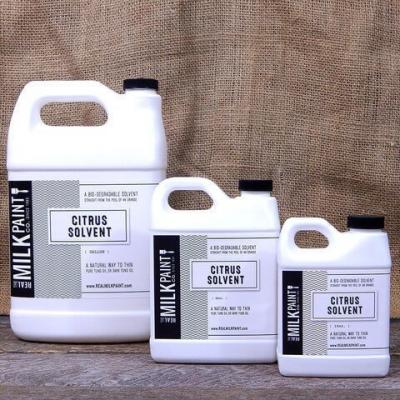
I love the products as evidenced by the fact that even when rebuilding, I didn’t hesitate to order more to redo the facade.
What would be one piece of advice you would give to someone who has never used Pure Tung Oil before?
For someone that hasn’t used it before, I would give this advice: Don’t apply tung oil under full sun or if it will freeze before it cures. Always wipe the excess off 30 minutes to an hour after you’re done. These are in the instructions or hints and tips, so for the best results, follow them!
What would be one piece of advice you’d give to someone who’s never built wine cellars before?
The keys to success with underground wine cellars are as follows: Add lots of dirt on top to provide wine cellar insulation that regulates temperature and humidity levels, especially if you don’t want to add wine cellar cooling units. Likewise, it’s necessary to create air vents to allow for air exchange. Finally, a sturdy structure for the roof and sealing the wood from the top help wine cellars maintain their integrity. Likewise, be sure to use safe products like Pure Tung Oil and Citrus Solvent that you can trust on the inside.
A Challenging But Rewarding Project
The creation of wine cellars, especially with air conditioning or cooling systems, is a challenging task but one that can be both exciting and rewarding. We hope this story has provided you with some inspiration for your own DIY wine cellar. If you’re planning on building a wine cellar and need help with finishes by the Real Milk Paint Co., contact us online or reach out to us by phone at (800) 339-9478.
